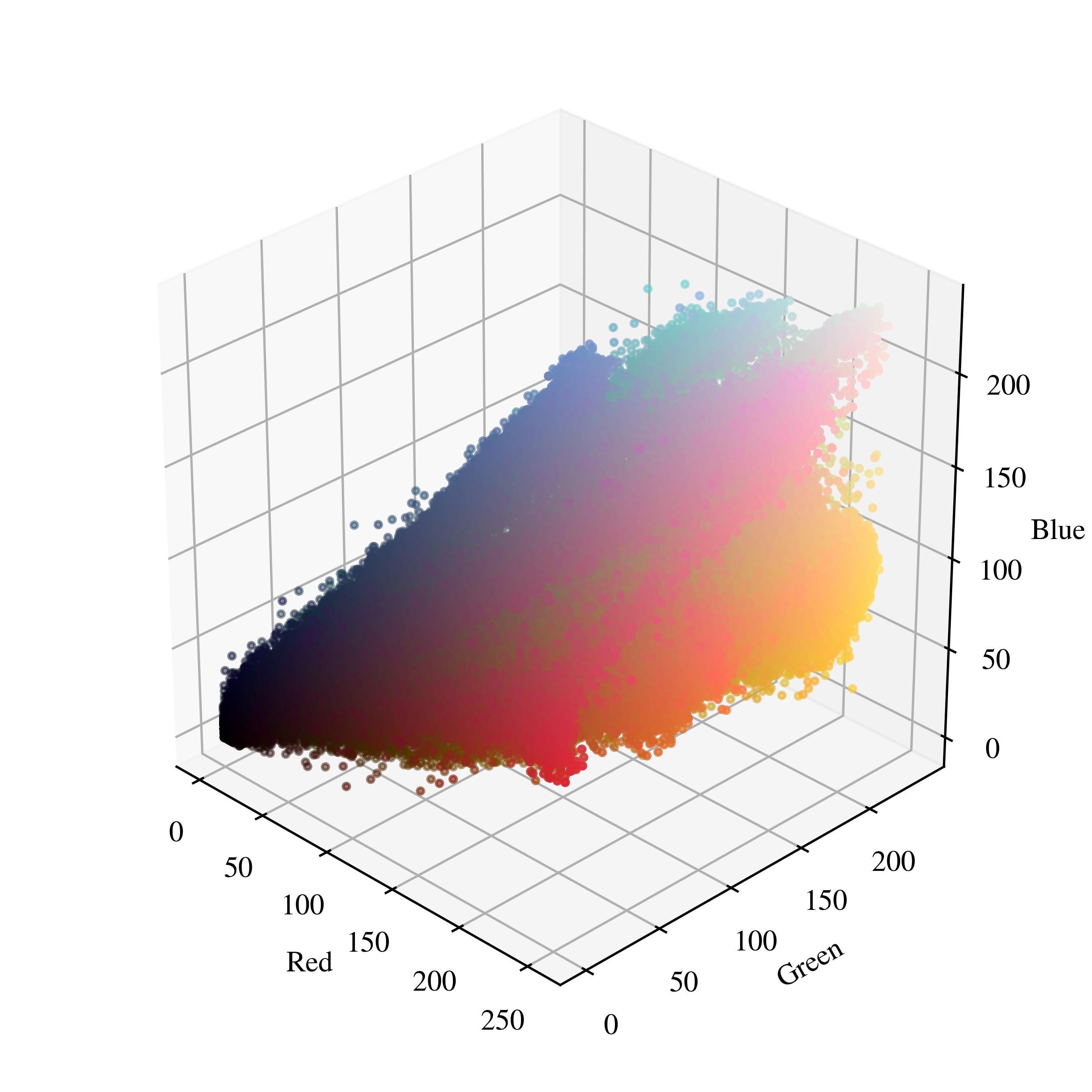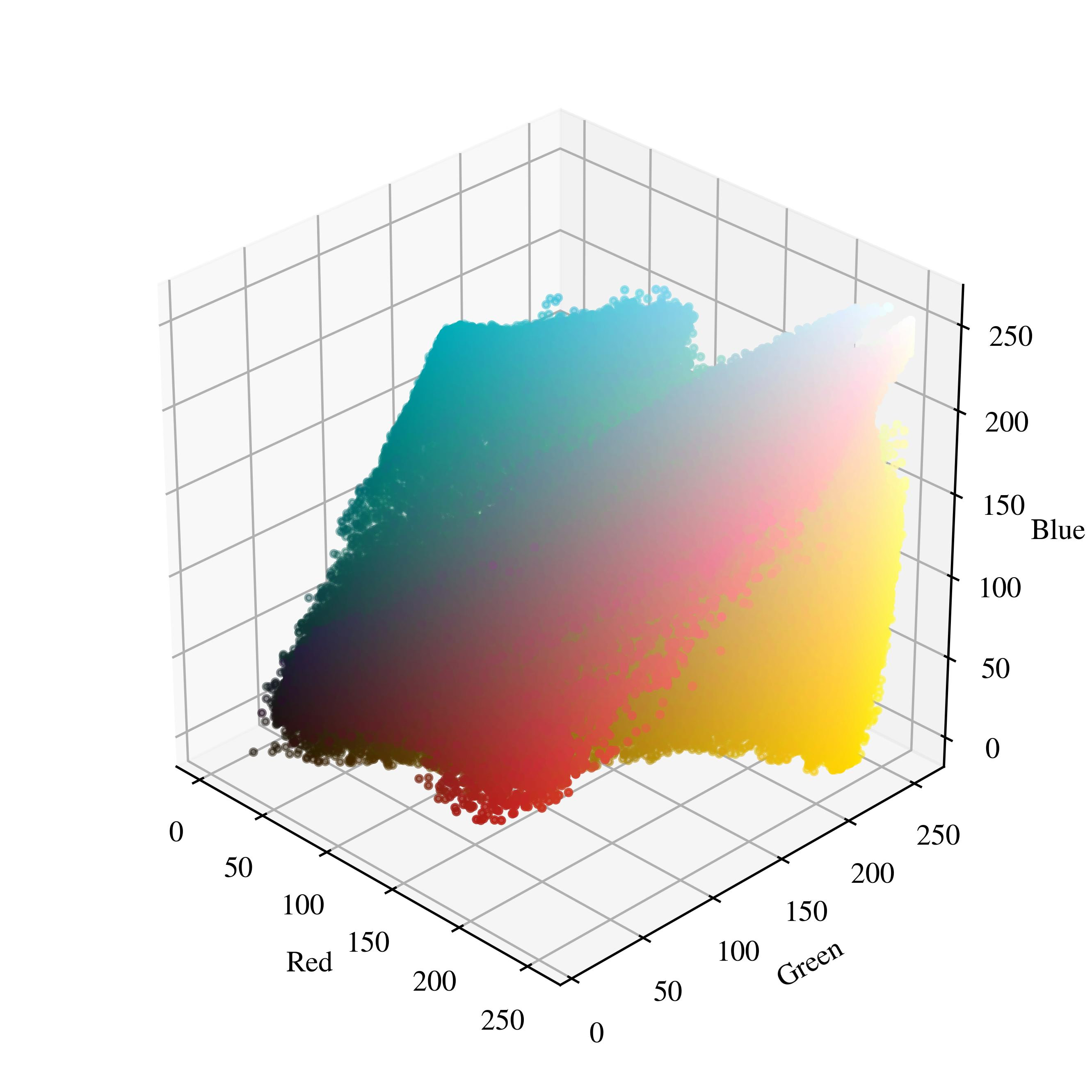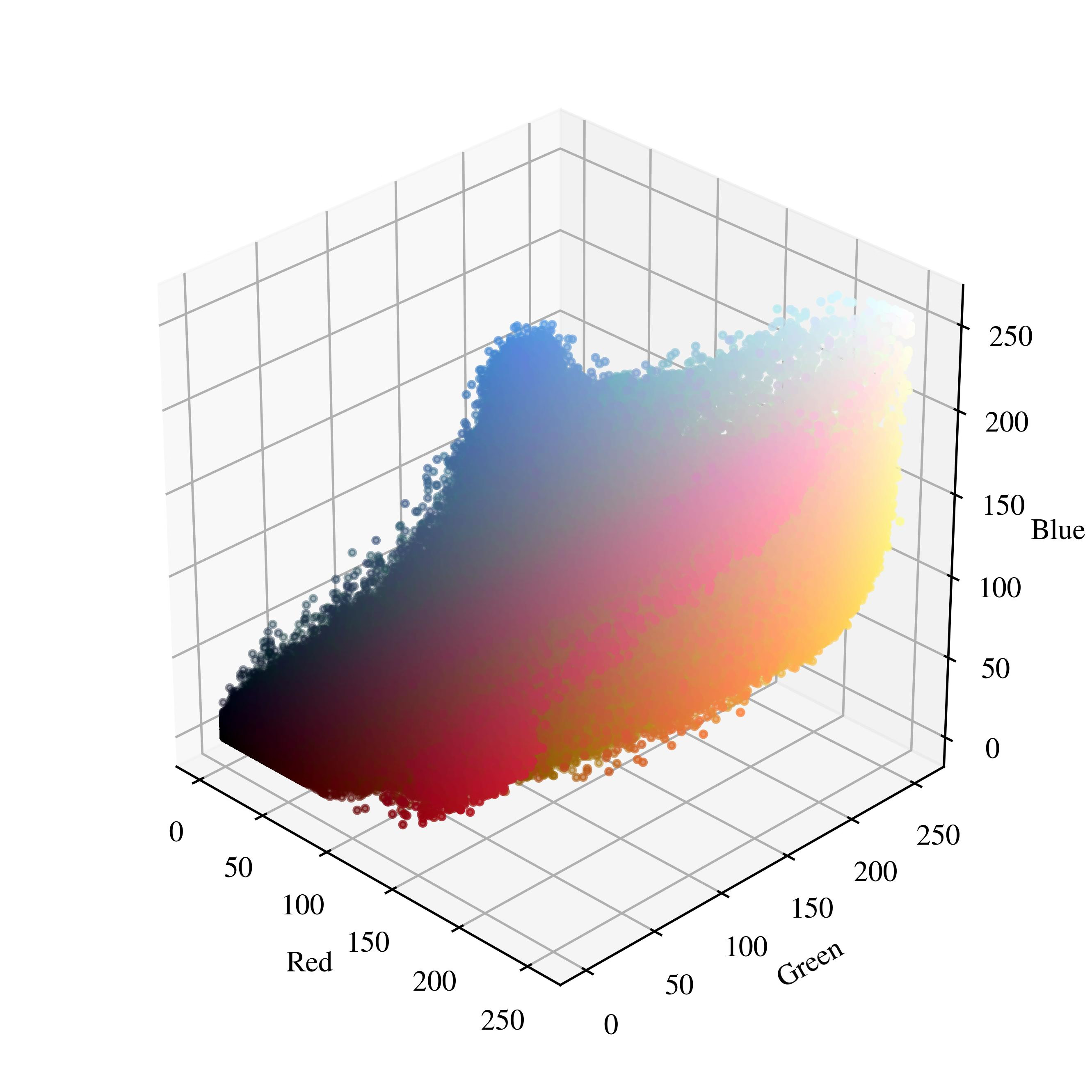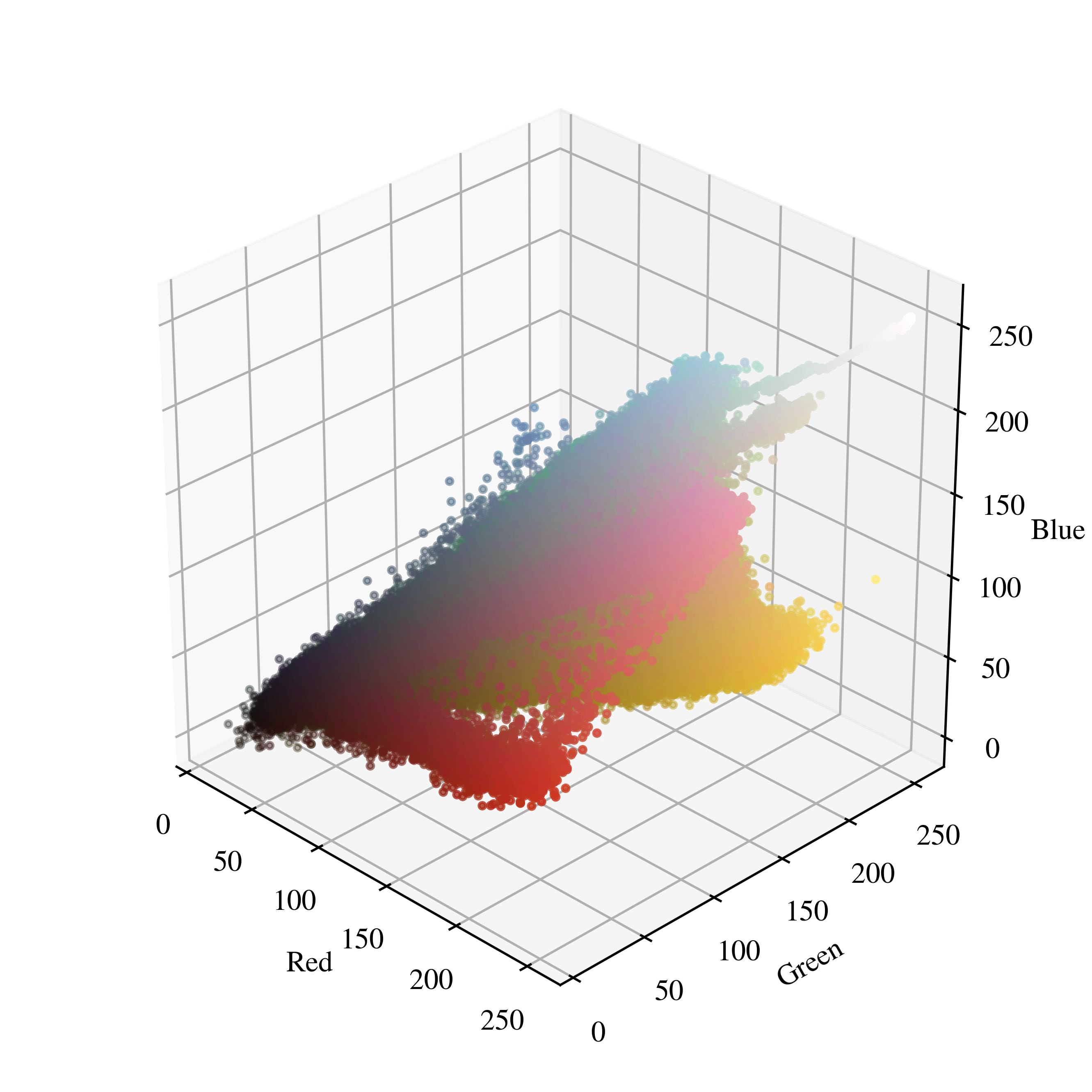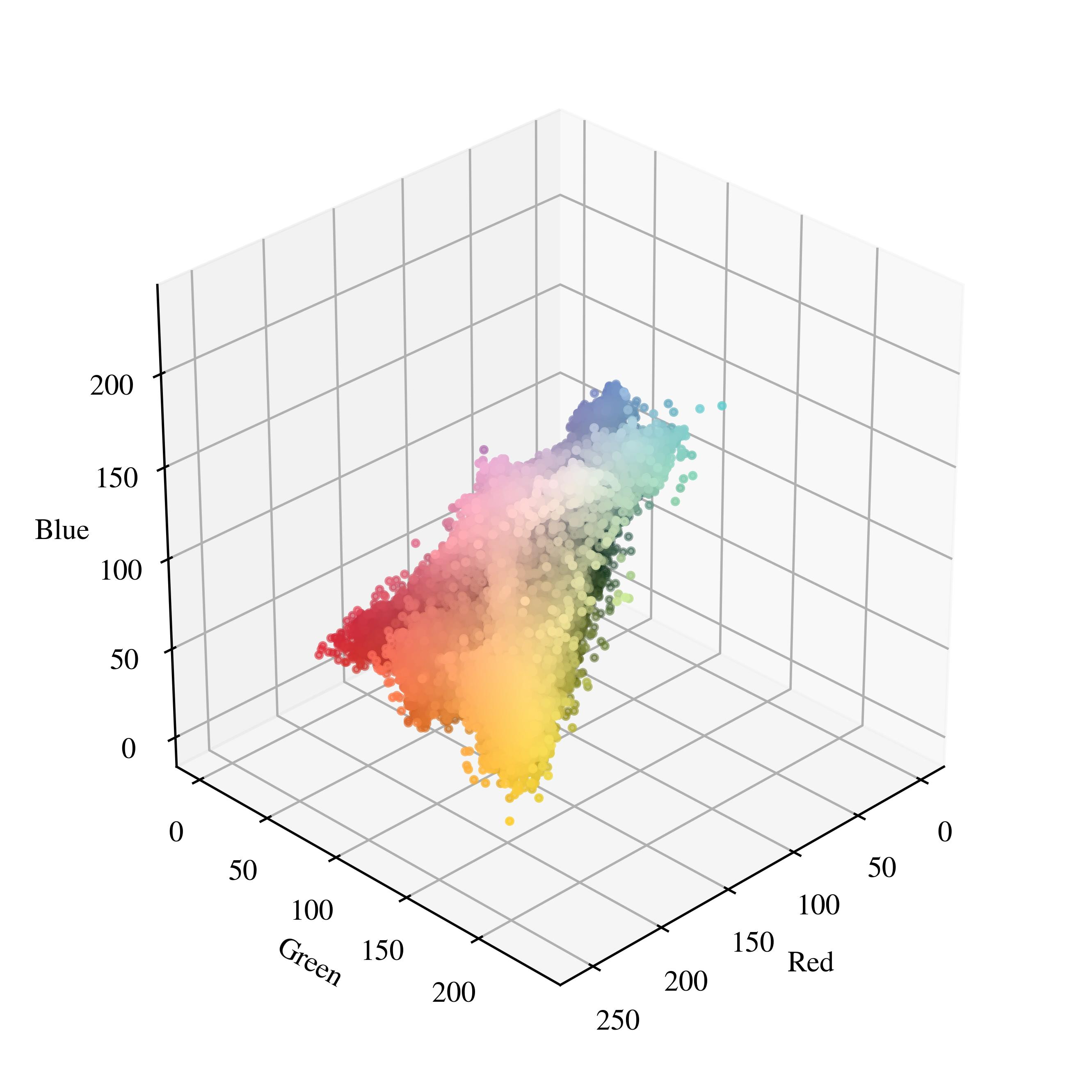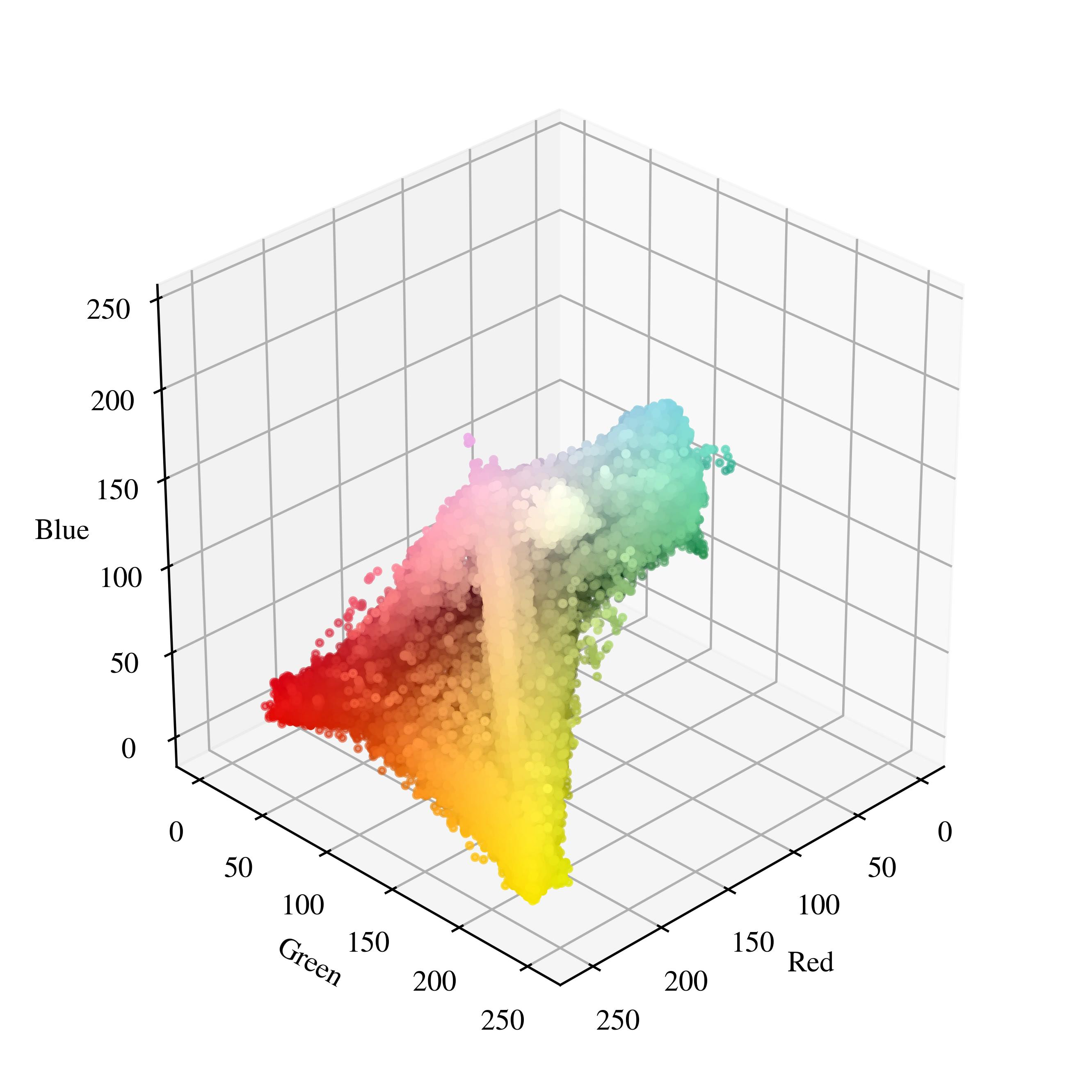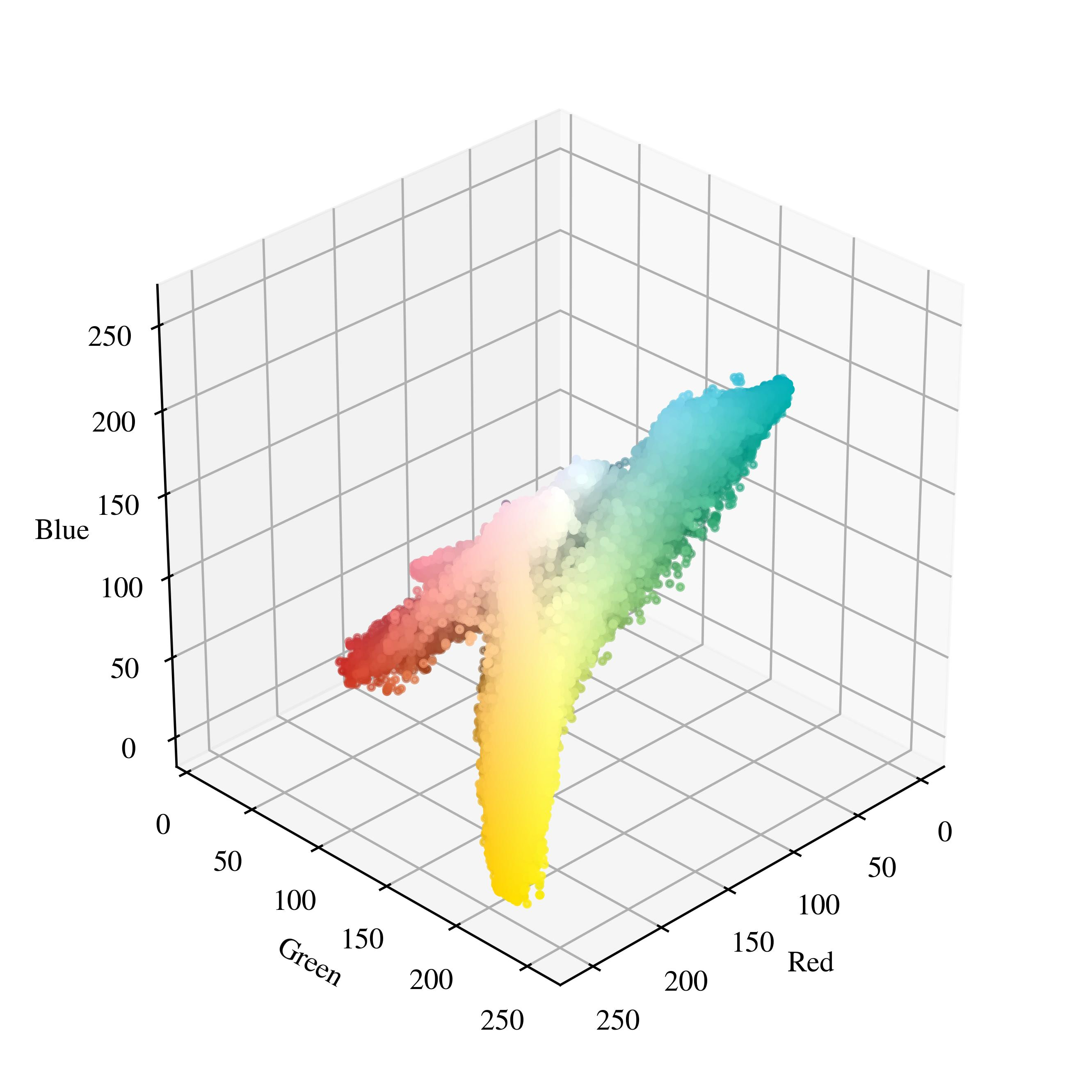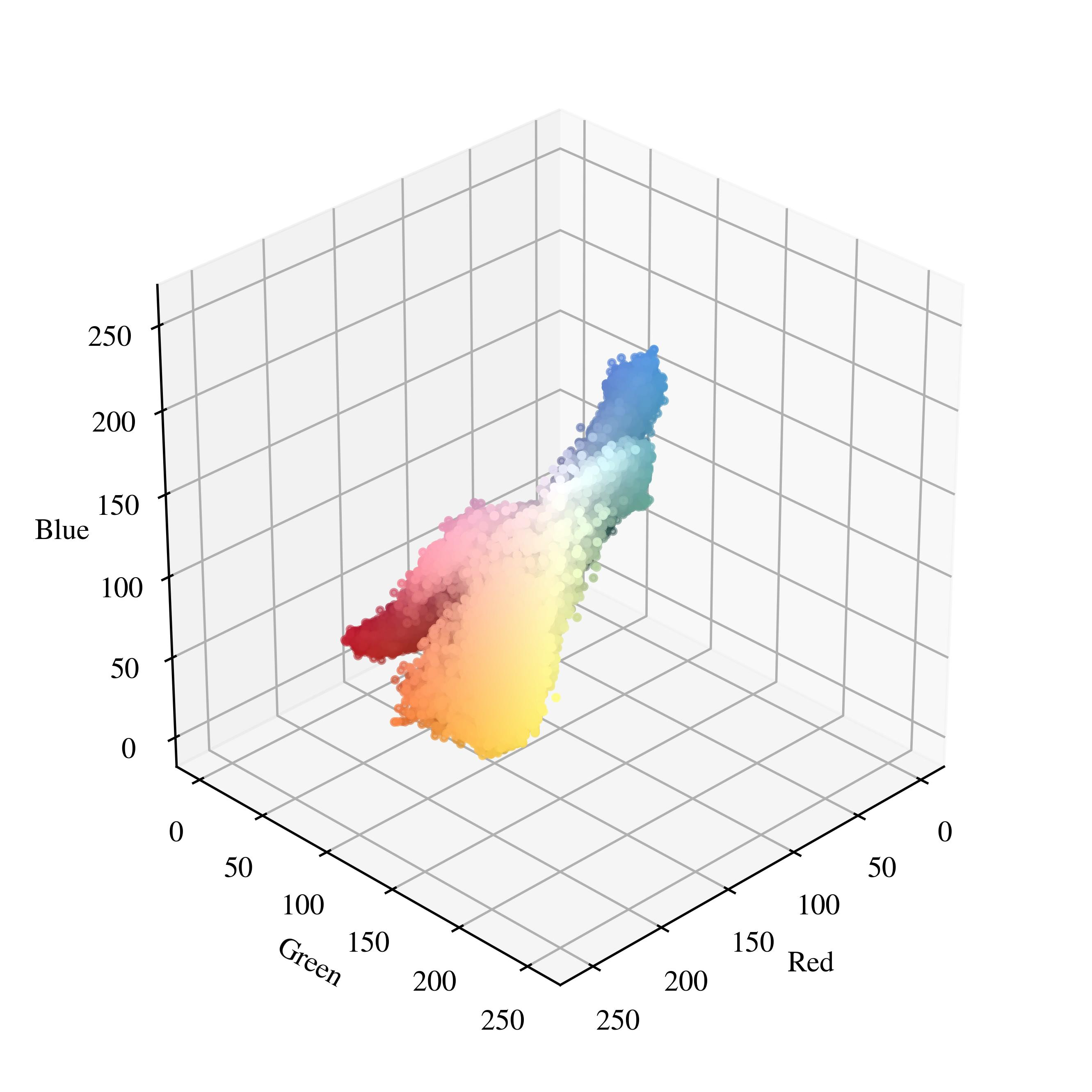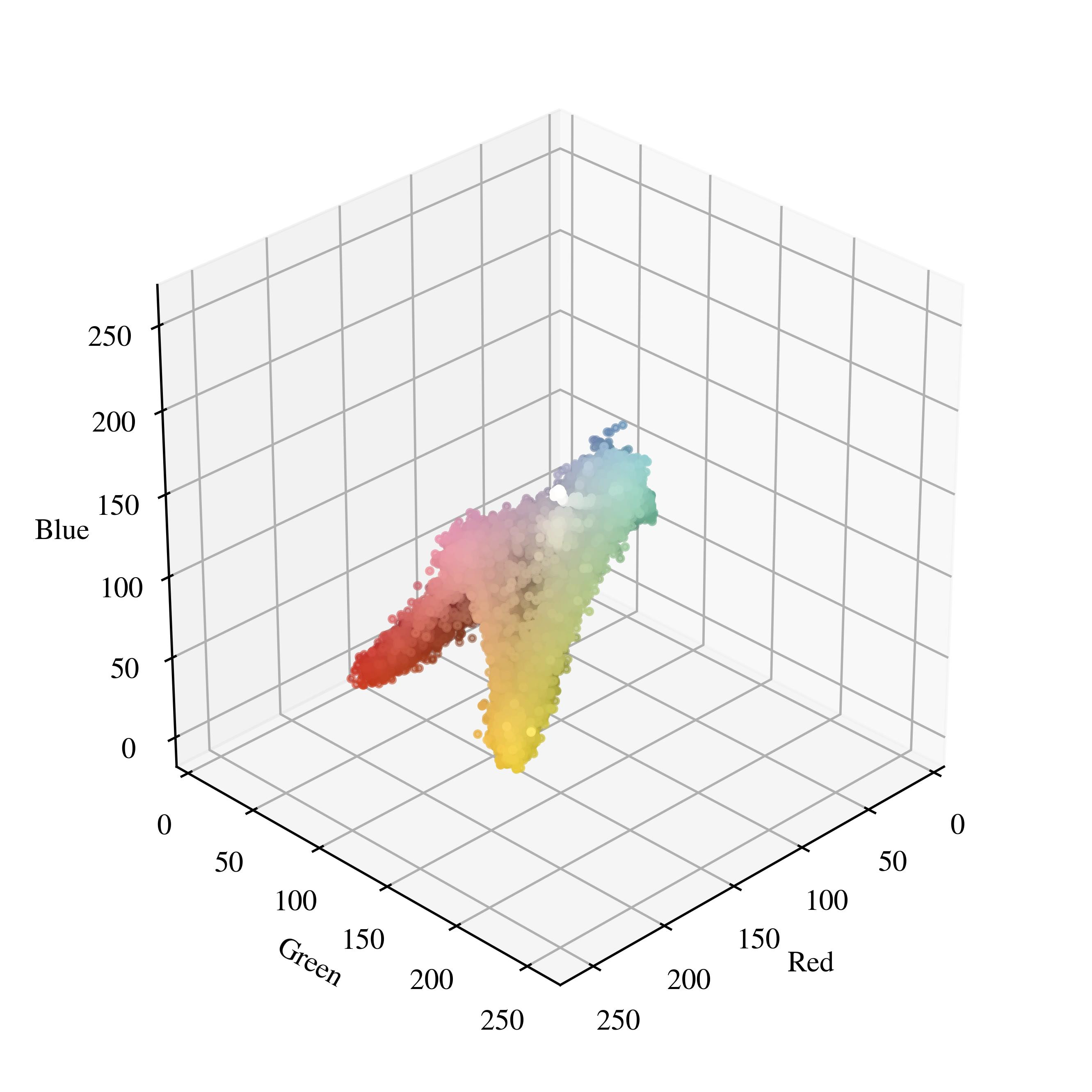Introduction
In May 2022, Andy Warhol’s Sage Blue Marilyn set a record-breaking auction price of $195 million, sparking fresh interest in his Shot Marilyns series. This iconic collection of Marilyn Monroe portraits highlights Warhol’s unique vision, blending celebrity and consumer culture with bold color contrasts. Warhol’s silkscreen style and use of vivid colors challenge traditional notions of art and fame, making the series both a cultural and artistic landmark.
The Shot Marilyns series derives its name from a notorious 1964 incident in Warhol’s studio, The Factory, when a visitor, mistaking Warhol’s permission to “shoot” the art as literal, fired a revolver at the canvases, leaving four portraits permanently marked. This unexpected act not only left a lasting impression on the artwork but also added intrigue and controversy, enhancing the series’ legacy.
Our study combines traditional art analysis with cutting-edge statistical techniques, including entropy analysis, K-Means clustering, and K-Nearest Neighbors, to explore the intricacies of color distribution, restoration, and value in the Shot Marilyns. By analyzing pixel color patterns, regional variations, and repairing the damaged Blue Marilyn, we aim to shed new light on Warhol’s artistic choices and deepen our understanding of his cultural impact.
Methodology
Each Shot Marilyns image consists of pixels with three color components - Red, Green, and Blue (RGB) - ranging from 0 to 255, defining the color intensity. With a resolution of 960 x 960 pixels, each portrait allows us to analyze Warhol’s color choices with precision.
Entropy Calculation
Following concepts from information theory, entropy calculations reveal how color is distributed and interact within Warhol’s work. The entropy of a color component measures the complexity and variation within an image, while conditional and relative entropy help us identify dominant color interactions. This approach uncovers the structure of Warhol’s color palettes, adding an objective layer to the artistic analysis.
K-Means Clustering Analysis
We applied K-Means clustering to explore color patterns in the Shot Marilyns series. Using 15 clusters per image with "k-means++" initialization for improved accuracy, this method identifies prominent colors across key areas like background, hair, and facial features. By examining clusters, we highlight Warhol's signature color schemes, offering insights into his creative choices.
Region of Interest Extraction
For targeted analysis, we isolated specific image regions—such as background, hair, eyeshadow, and face—by converting each image to the HSV color space. Using OpenCV, we defined color masks to precisely segment these areas, isolating colors that contribute to Warhol’s vivid and varied compositions.
K-Nearest Neighbors Restoration of "Blue Marilyn"
To repair the damaged sections of Blue Marilyn, we used K-Nearest Neighbors (KNN) regression. This technique allows us to estimate the color values for damaged pixels by analyzing the surrounding undamaged areas, preserving the artwork’s visual consistency. In the initial step, we identified the coordinates of damaged pixels, as shown in the figure below. This close-up view highlights the damaged area of the image, providing a clear target for restoration.
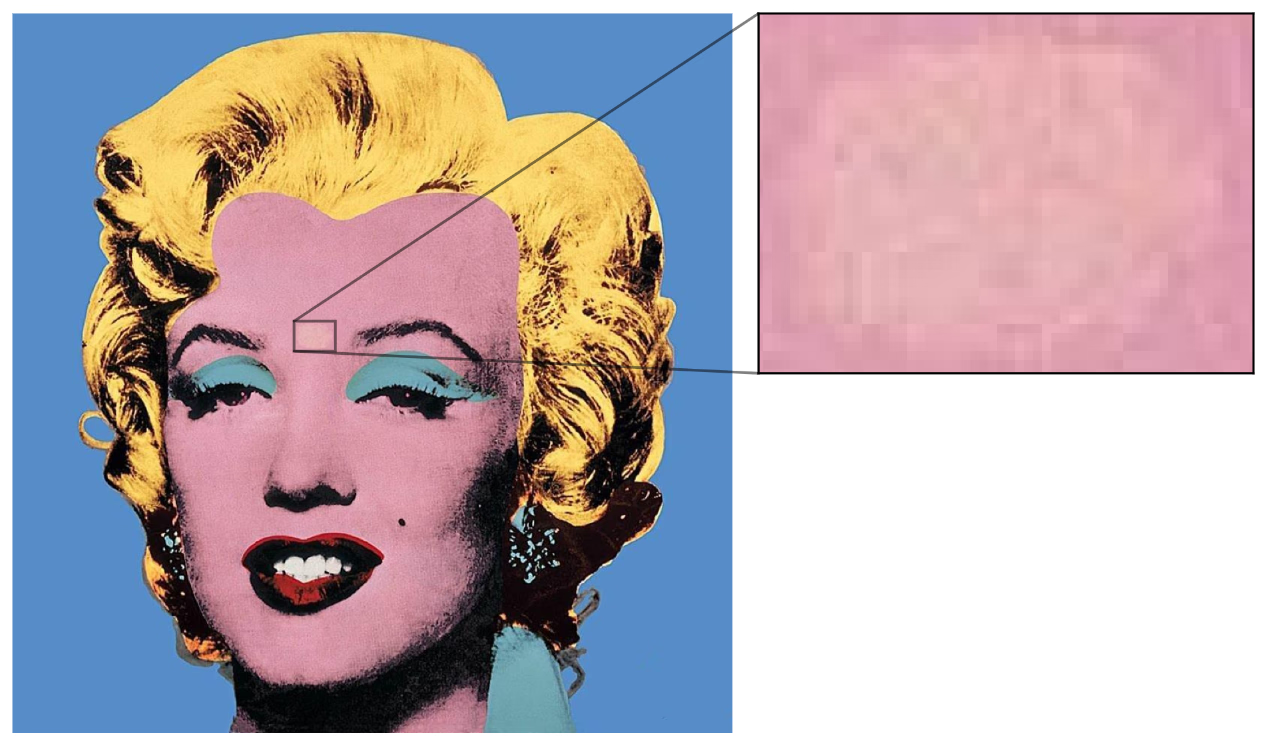
Using KNN with eight nearest neighbors, we based predictions on the RGB values of nearby undamaged pixels. For instance, as demonstrated in Figure 2, the damaged pixel at coordinate (415, 425) originally had an RGB value of (227, 164, 183). The KNN regressor selected the eight nearest undamaged neighbors, using the average values of their red, green, and blue channels to estimate the repaired color, resulting in an RGB prediction of (223, 155, 177) for the damaged pixel.

This approach, leveraging local color data, allowed for a seamless restoration of the damaged areas in Blue Marilyn, carefully maintaining the integrity of Warhol’s original color choices.
Assessing the Restoration and Value
Ownership of unique, high-profile art like Warhol’s Shot Marilyns carries status and value, and in this series, the undamaged "Sage Blue Marilyn" holds special significance as the only canvas untouched by a gunshot. Meanwhile, "Blue Marilyn," one of the damaged works, has a visible repair mark that disrupts its visual harmony. Here, we examine how restoring "Blue Marilyn" affects its aesthetic appeal and potential market value.
Using K-Nearest Neighbors (KNN) regression, we restored the damaged area by predicting RGB values based on surrounding pixels, achieving a more cohesive appearance and minimizing the mark’s visibility. While KNN couldn’t replicate Warhol’s silkscreen texture precisely, the restoration significantly improved the piece’s visual integrity.
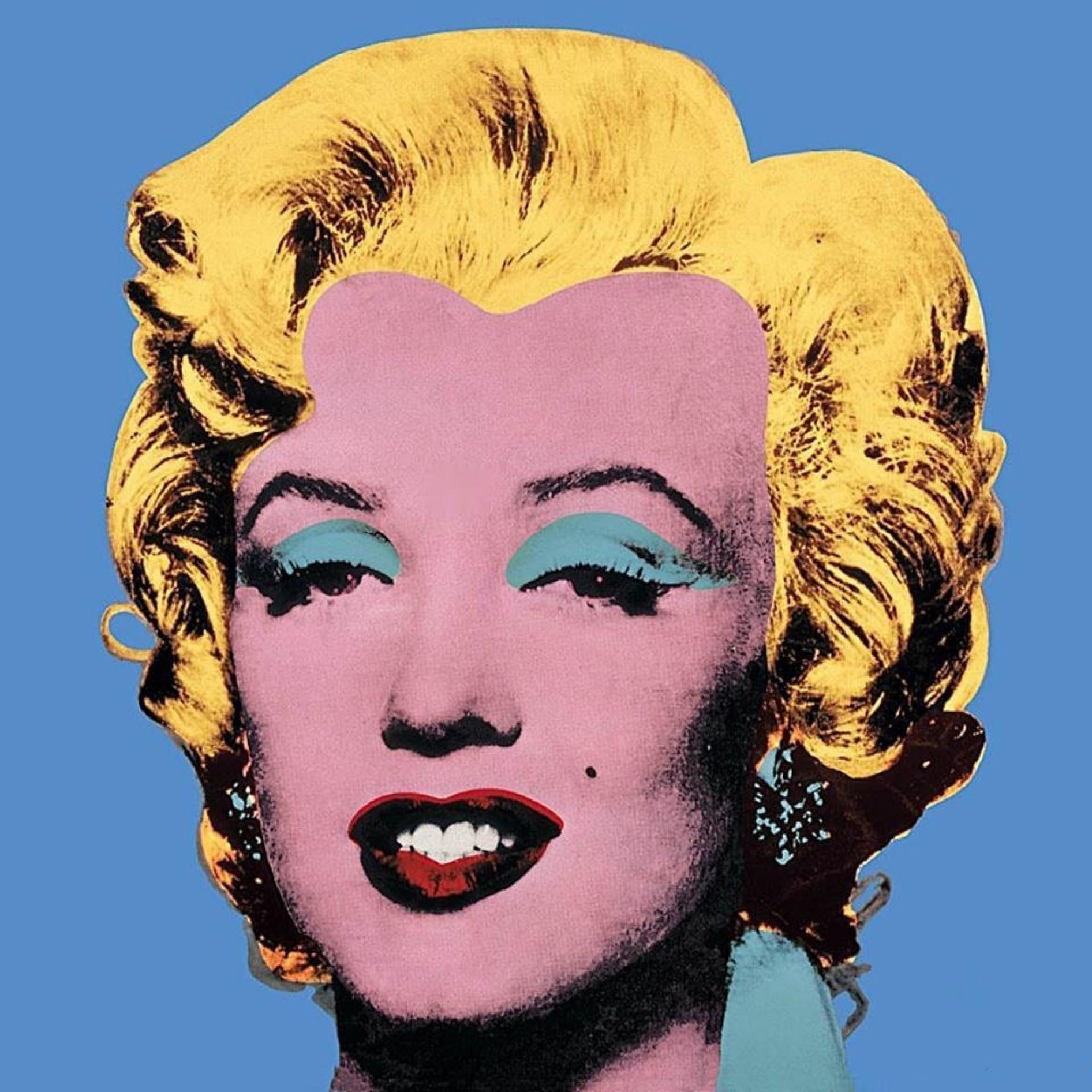
The Shot Marilyns series holds immense historical and cultural value, representing American pop art’s response to the 1960s’ societal upheavals and Monroe’s iconic legacy. Financially, condition has proved crucial. Undamaged works like "Sage Blue Marilyn" and other well-preserved pieces, such as "Orange Marilyn," have sold at record prices, with "Orange Marilyn" reaching around $200 million in 2017. "Blue Marilyn," by contrast, sold for only $5,000 in 1967, reflecting its lesser value due to visible damage.
Our analysis suggests that a restored "Blue Marilyn" could align more closely with these higher valuations by mitigating damage, potentially elevating it within this storied series.
Conclusion
In this study, we applied various statistical techniques to analyze and restore Andy Warhol's Shot Marilyns series. Using RGB distributions, relative conditional entropy, and K-Means clustering, we examined each portrait’s unique color composition and its regions of interest (ROIs), such as the background, hair, and face. Additionally, a K-Nearest Neighbors (KNN) approach was used to restore the damaged area on "Blue Marilyn," offering an improved visual consistency with Warhol’s original work. While KNN achieved a near-seamless restoration of color, capturing the silkscreen texture proved challenging. Further enhancement, potentially using neural networks like Pixel RNNs, could help replicate this textural detail.
Our detailed analysis revealed that colors in Shot Marilyns vary subtly within what first appear to be solid backgrounds or facial hues, underscoring the limitations of visual observation alone. Through statistical approaches, we gained a deeper understanding of color interactions and their impact on artistic perception.
Assessing "Blue Marilyn's" potential market value involves understanding its aesthetic and cultural significance. Repairs that enhance color and restore Warhol’s vibrant palette could increase its market appeal, aligning it with other works in the series that achieved high auction prices post-restoration. However, there remains debate over whether retaining visible damage might paradoxically boost value, as has occurred with certain "intentionally damaged" works in recent auctions. Ultimately, Shot Marilyns embodies not only aesthetic and historical significance but also emotional resonance through its unique story of creation and alteration. By the year 2024, the "Shot Marilyns" series have already existed for 60 years, and its historical and cultural value cannot be overlooked. We hope that in the future, the "Shot Marilyns" series will be well preserved and continue to witness the development of human civilization.
